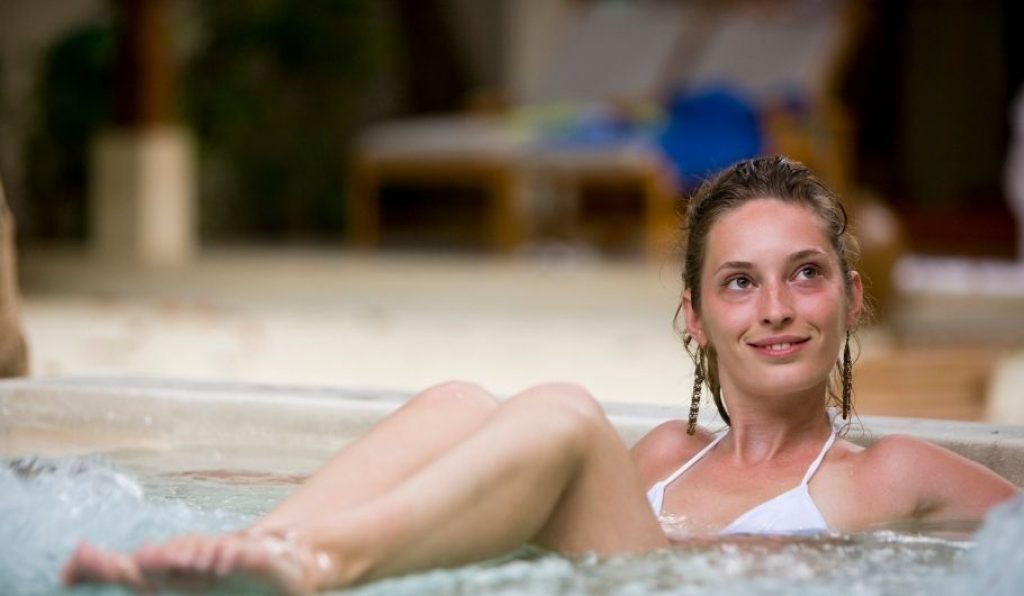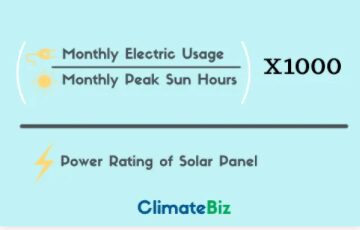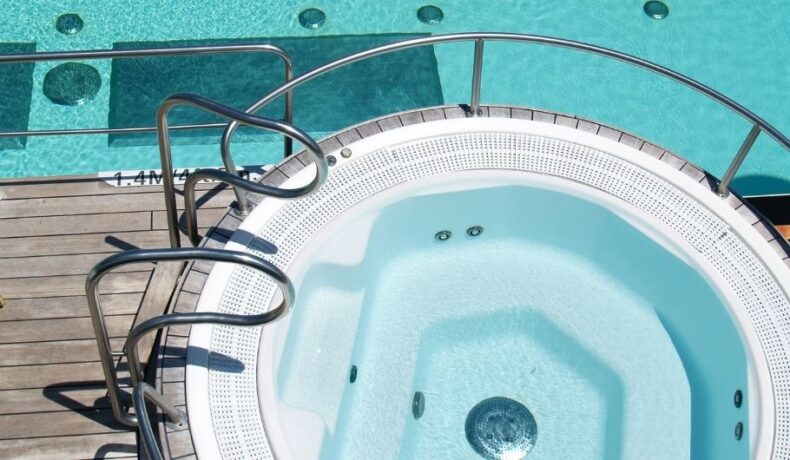Hot tubs have been growing in popularity throughout the world for the last decade. More recently, however, the concept of a solar hot tub is starting to interest those eco/budget-conscious among us.
The question is, are solar hot tubs really worth it, do they save on costs, and how exactly do they work?
In this article, we aim to break down what a solar hot tub is, and if it would be worth installing based on where you live.
If you live in the United Kingdom, United States, or Canada, and are interested in buying a solar hot tub, then this article is for you.
Table of Contents
What Is A Solar Hot Tub?
A solar hot tub is essentially a conventional hot tub, except instead of being heated by gas or electricity, it is being powered by either electric PV or solar thermal, or even both simultaneously.
Generally speaking, of the two options, solar thermal is much more efficient/cost-effective at heating up your hot tub (in warmer climates), as solar thermal collectors can absorb nearly the entire solar spectrum.
Whereas electric PV (more commonly known as photovoltaic panels) have an average efficiency of around 20%.
Both, however, require the sun, so what does that mean for those of us who’d like to bathe in their solar hot tub at night?
We will touch base on this question in more detail further on in the article.
Is A Solar Hot Tub Worth It?

To answer this question, we need to ask a few more questions.
- Do you plan to power your solar hot tub with electric PV, or with solar thermal collectors, or both?
- How frequently do you plan on using your hot tub and how much kWh does it consume per month?
- Where will your solar hot tub be located, in other words, how many peak sun hours does your area recieve?
- Assuming you go with electric PV, how many solar panels will your hot tub require?
- Do you plan on installing solar batteries to keep your hot tub powered at night?
- How long will the payback period be?
By answering all these questions with you, we can figure out whether a solar hot tub would actually be worth your time/money.
Should I Power My Hot Tub With Electric PV or Solar Thermal?
Electric PV
Powering your hot tub with solar panels means that your hot tub still uses a conventional electrical heating element, which is heated up using electricity.
It should come as no surprise that electric-powered hot tubs do increase your energy bills. Quite significantly in fact, as they can consume vast amounts of electricity, usually between 3,000 – 7,500 watts.
Offsetting this consumption with solar panels is indeed possible, but will all come down to where you live, and how many peak sun hours your area receives.
Solar thermal
Solar thermal, on the other hand, doesn’t use any electricity to heat up your hot tub. Instead, it uses solar thermal collectors to capture the sun’s energy which it then converts into thermal heat.
This thermally heated water is then used to heat up your hot tub, or instead is stored in a heat sink such as a large solar water tank or specially designed concrete slab.
The most advanced and energy-efficient solar thermal heating system for a hot tub is known as a closed-loop pressurized system. This system allows your stored hot water to be used on-demand.
Which type of solar hot tub is right for me?
By a long shot, a solar thermal hot tub is going to be by far the most cost-effective. However, it is slightly more complicated to install the system.
The one downside, to both electric PV and solar thermal hot tubs, is the reliance on the sun for either electricity or heat. What if you want to use your hot tub at night or in winter when it’s colder?
This is where a solar hot tub powered by PV panels comes in handy. You may be asking how exactly, doesn’t this method still requires the sun?
Well, yes it does. But you can store any solar-generated electricity in a solar battery, which can then be used at night or in icy conditions to heat up your solar hot tub.
- In our opinion, if you only aim to use your hot tub during the day (and you live in a relatively warm climate), go with solar thermal, no questions asked!
- If you prefer using your hot tub at night and during the day, a mixture of both solar thermal and electric PV may be the way to go.
How Much Power Does A Hot Tub Consume?
Knowing how much electricity your hot tub consumes is the first step in establishing the right amount of solar panels you’ll need to offset that consumption.
According to Direct Energy, hot tubs consume on average between 1,500 watts or 6,000 watts. the major consumption difference mainly depends on whether it’s a 120-volt heater or a 240-volt heater.
Most residential hot tubs will be using a 120-volt heater.
The main reason hot tubs draw such vast amounts of electricity mainly comes down to the heater running continuously, even when you aren’t using the hot tub. The heater actually runs periodically in order to keep your hot tub water at your desired temperature.
However, when you’re using the tub, the heater will be running along with the water pump, to give you those bubbles you love so much.
So how much electricity does it consume?
Hot Spring® (a leading hot tub retailer brand) conducted a survey on hot tub usage and found that 6.7 percent of owners use their hot tub four or more times per week, and about 8.9 percent of owners use the hot tub daily.
Based on a hot tub located in Chicago set at 102°F and used 6 times per week, 15 minutes with the jets on, 15 minutes with the jets off, you could expect this hot tub to consume around 204 kWh a month.
Figuring out your monthly kWh consumption is critical in establishing the number of solar panels you will need to offset that usage.
To do this, all you need to do is times your hot tubs wattage drawn by the number of hours you plan on using it to get the watt-hour usage. You can then convert this to kilowatt-hours.
How Many Peak Sun Hours Does Your Area Recieve?
This information is also critical in establishing how many solar panels your solar hot tub would need in order to offset all that electrical consumption.
In short, the more sun your home receives, the fewer solar panels you will need and vice versa.
This is why establishing peak sun hours is so important.
To figure out how many peak sun hours, you can use our dedicated resources for the United States, United Kingdom, Australia and South Africa.
If your solar hot tub is located in a different area, no problem.
Go over to Global Solar Atlas and simply type in your exact location to figure out what your peak sun hours are.

Above you can see an example of the average daily peak sun hours in Toronto which sits at 3.8.
How Many Solar Panels Does An Electric PV Hot Tub Require?
Figuring out the number of solar panels you will need to power your hot tub is easy.
This is the formula you will need to use

The number of panels needed all depends on whether it is summer or wintertime. Winter means less sun, which as stated beforehand, means you’ll need more panels.
We will create two examples for you, one in summer and one in winter assuming you live in central London.
Solar panels needed for hot tub in London (July, Summer)
- Hot tub electric usage = 216 kWh (Monthly)
- Peak sun hours = 111 (Monthly)
As you can see, you will require about 1940 watts of solar power in order to offset your solar hot tubs electricity consumption in summer. In other words, you will need x10, 200 watt solar panels.
Solar panels needed for hot tub in London (Janaury, Winter)
- Hot tub electric usage = 216 kWh (Monthly)
- peak sun hours = 36.5 (Monthly)
In winter, however, you would need 3 times more solar panels in order to power your solar hot tub. In essence, you will need at least x30, 200-watt solar panels.
As you can probably tell, season/climate makes a massive difference in the number of solar panels you would need to offset your hot tub electricity consumption.
Another option you could consider is installing a battery storage system to go alongside your solar hot tub.
This would certainly help in the winter months when there is much less consistent sun. On darker days, or at night, your hot tub could rely on stored electricity to heat up the heating element.
Please note: Installing solar batteries will significantly increase your start-up costs but maybe a way to operate your solar hot tub efficiently in winter, on overcast days, or at night.
Will a Solar Thermal Hot Tub Work in Winter?
We hope by now you understand the difference between an electric PV and solar thermal hot tub.
The question is, what if you opt for the cheaper solar thermal hot tub over the electric PV hot tub, will it still work in winter?
A solar hot tub using solar thermal should not freeze over in winter. The reason for this is that most modern solar thermal hot tubs with an indirect or closed-loop system circulate a solution consisting of antifreeze.
This solution is what flows through a coil in your hot water cylinder which is where it heats up the water for use in your hot tub.
So in actual fact, there is actually no water flowing through the solar collectors themselves, which is why a solar thermal hot tub should work (albeit less efficiently) in winter.
Cost Of A Solar Hot Tub
The cost of your solar hot tub really depends on the type you decide to install.
Will you install solar thermal or PV electricity?
PV Electric
This type assumes you install a common electric powered hot tub, and power it with solar energy, as opposed to using the grid.
Below we will list the appliances needed and how much they each cost individually.
| Product | Amount | Cost | Total |
|---|---|---|---|
| 200W Solar panels | 10 | $300 | $3000 |
| 3000 Watt Inverter | 1 | $350 | $350 |
| MPPT Charge Controller | 1 | $250 | $250 |
| Battery bank | 16 | $350 | $5600 |
| Hot Tub | 1 | $9000 | $9000 |
| Sum total: | $18,200 |
Solar Thermal
Purchasing a solar thermal hot tub kit from Sunbanks for example will set you back $2,500.
This particular solar hot tub kit puts in 21,000 BTU or 6 kWh equivalent of heat on a sunny day. That is pretty much the same as a 2 KW solar PV system that would likely cost you + – $8,000 to be installed.
| Product | Amount | Cost | Total |
|---|---|---|---|
| Solar thermal kit | 1 | $2,500 | $2,500 |
| Hot Tub | 1 | $9000 | $9000 |
| Sum total: | $11,500 |
Final thoughts
In terms of cost, solar thermal is by far the cheaper option to go with, particularly if you live in a warmer climate.
When it comes to using solar panels to power your hot tub, we only recommend going this route if you already aim to install a complete solar system for your entire home.
The startup costs for a PV-powered hot tub alone just cannot be justified, it would take you forever to get an ROI on this sort of setup.
In general, you are going to need to find ways to make your solar hot tub retains its heat more efficiently, this will bring down your overall cost regardless of the system you install.

